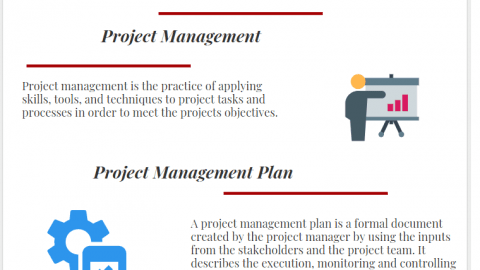Work Performance Data and (WPD) Work Performance Information (WPI) in Project Management
If you are preparing for the PMP Certification Exam and want to know the differences between Work Performance Data and Work Performance Information, you are in the right place. There are many confusing terms in the PMBOK Guide that aspirants find difficult to understand. Today we are going to discuss both concepts to provide better understanding. Collected data within a project is always in a raw format. Information is the processed, analyzed and integrated form of raw data and the reports are created to address stakeholder’s needs. In project management, Work Performance Data and Work Performance Information are two tools that are widely used for project monitoring. Although both of them help to recognize the project’s current status, they are different. Work Performance Data is raw observations and measurements about the project’s current status. On the other hand, Work Performance Information compares the actual and planned values. Both terms are closely related to each other and they help to understand the project’s current status. In this article, we will analyze both terms by the help of examples.
Table of Contents
Work Performance Data (WPD)
Data and information are two different butt interrelated concepts. If you have background on Information Technologies, you can easily understand the key differences between them. In very simple language, people need information to take action and computers need data to operate.
Primary function of a project manager is to complete the project on time and budget by meeting the stakeholder’s requirements. For this purpose, the project manager collects data related to project activities such as the start date of an activity, project risks, consumptions, resource usage, etc.
According to the PMBOK Guide, the Work Performance Data is “The raw observations and measurements identified during activities performed to carry out the project work. Examples include reported percent of work physically completed, quality and technical performance measures, start and finish dates of scheduled activities, number of change requests, number of defects, actual costs, actual duration, etc.”
As per the definition, the WPD is raw information for the project’s current status which helps to create the Work Performance Information.
Work Performance Data is the input of below project management processes;
- Validate Scope
- Control Scope
- Control Cost
- Control Schedule
- Control Risks
- Control Quality
- Control Procurements
- Control Stakeholder Engagement
Examples for The Work Performance Data
Work Performance Data includes, but not limited to scope, time, cost, quality, communication, risks, procurement. Here below you can see some examples for the WPD.
Scope
You will see the number of raised change requests, non-conformities, compliance of requirements, etc.
Time
You will see the number of activities that have been completed and the status of the activities.
Cost
Here you will see the cost parameters regarding the project. For example how much money spent last year or up to date.
Quality
You will see the measurements of quality performance here. For example, the number of defects, physical properties, etc.
Communications
You will note the number of RFI’s (Request for Information) have been received up to date, which report has been sent to the client, etc.
Risks
You will see the important project risks here.
Procurement
You will see data regarding procurement performance of the project.
Work Performance Information (WPI)
WPI is the processed, analyzed and integrated form of the WPD. Estimate to Complete, Cost to Complete, Schedule Variance, Cost Variance are some of the examples for WPI.
According to PMBOK Guide, the Work Performance Information is “The performance data collected from various controlling processes, analyzed in context and integrated based on relationships across areas. Examples of performance information are status of deliverables, implementation status of change requests, and forecasted estimates to complete.”
Work Performance Information is created by using the Work Performance Data.
WPI is the output of below project management processes;
- Validate Scope
- Control Scope
- Control Cost
- Control Schedule
- Control Risks
- Control Quality
- Control Procurements
- Control Stakeholder Engagement
Examples for The Work Performance Information
Here below you can see some examples for the Work Performance Information.

Work Performance Information (WPI)
Scope
You will see the project information regarding scope. For example how mant change requests have been implemented.
Time
You will review the performance of the activities and compare the planned and the actual status of the activities.
Cost
You will review the project cost parameters and recognize if the activities of project above or under budget.
Quality
You will analyze the quality performance of the activities considering defects, tolerance limits, etc.
Communications
You will see project information regarding which of the RFI’s have been closed out, what feedback have been received regarding communication reports.
Keystones
- Work Performance Data shows the project’s current status. On the other hand, Work Performance Information provides a comparison between the planned and the actual project performance.
- WPD is used to create WPI.
- WPD is raw and unorganized project information. On the other hand, WPI provides processed, organized and structured project information which supports decision making.
Summary
PMP aspirants often find Work Performance Data and Work Performance Information terms difficult to understand. Because data and information are two closely related words. If you have background on Information Technology, you can easily understand the differences between them. In brief, Work Performance Data is raw, unorganized and observed data. It does not provide enough information about the current status of the project. On the other hand, WPI is organized, classified and interpreted. It is built by the help of WPD and provides adequate information for decision making.
Both of them are very important tools for project performance measurement and reporting.
External Reference

Dan Sanderton has 19 years of experience in the publishing world as an editor and writer, including his former role as marketing director of ProjectHills Consultancy, and now as Content Developer for PMI.









Thank you for the example.